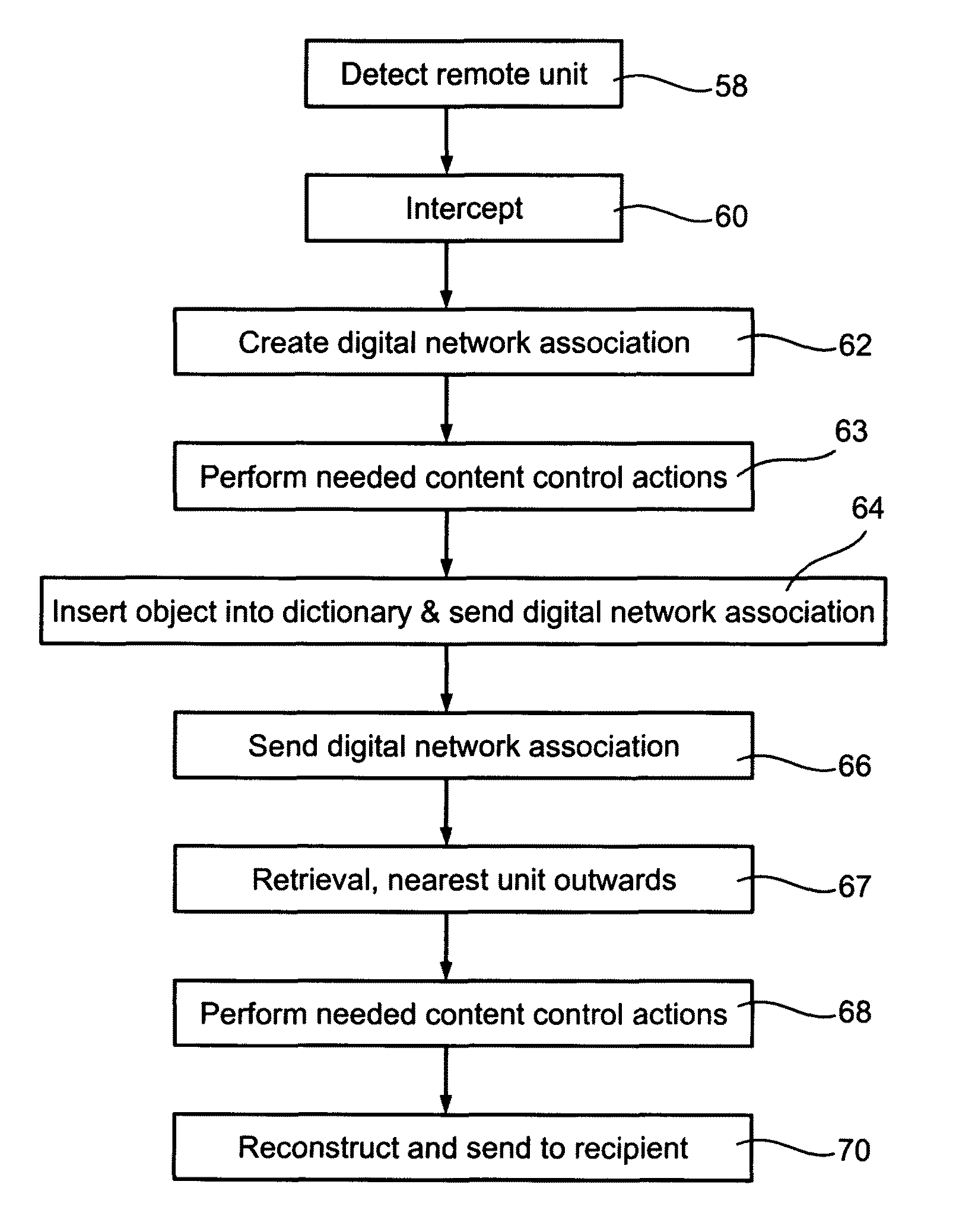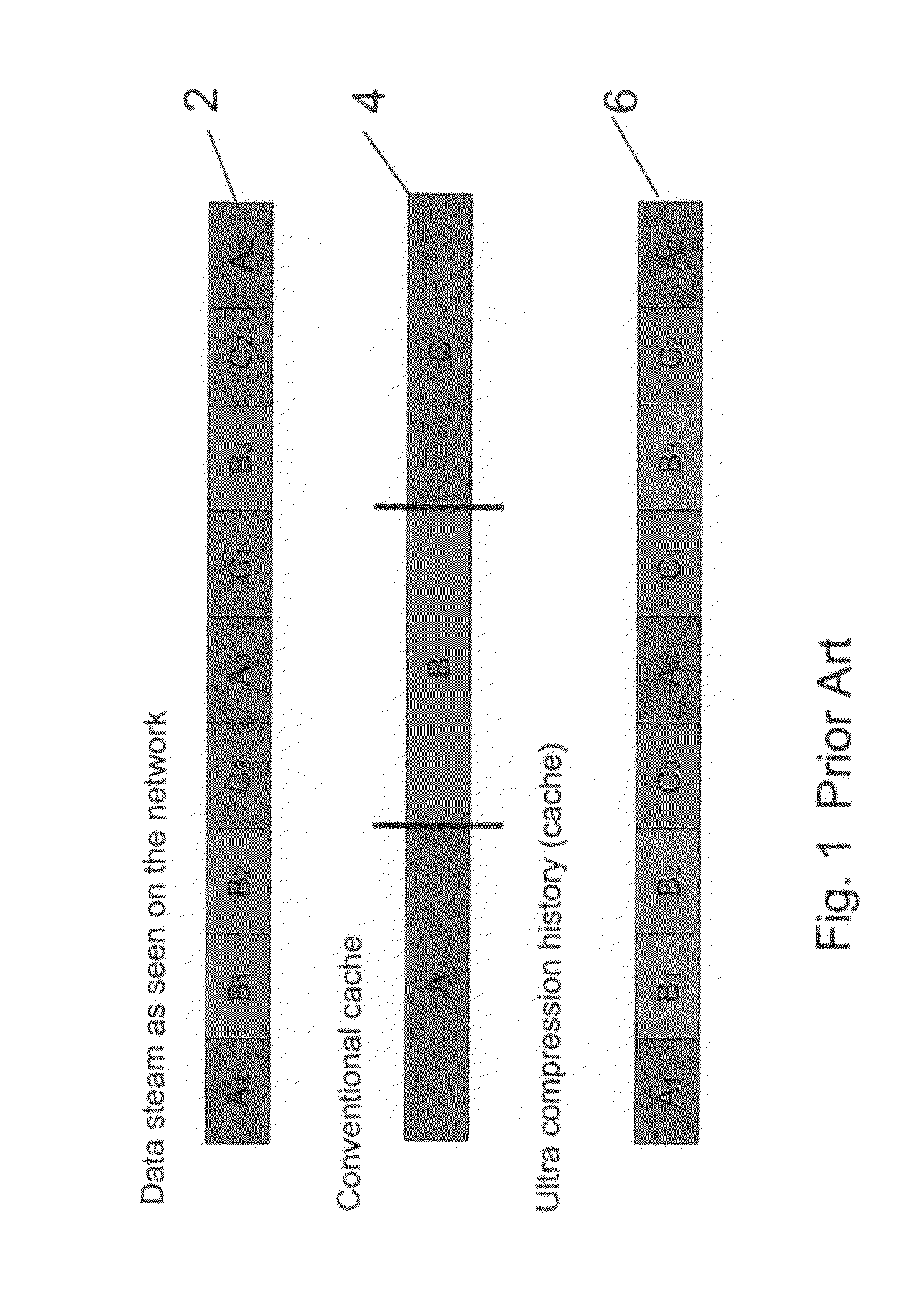The duplicated transmission of these objects leads to a dramatic rise in bandwidth consumption, and consequent increases in
server load and latency.
Redundancies over the network can often lead to lower
network performance and therefore create a need for additional investment in network infrastructure.
Conventional object transfer has the effect of loading network paths that lead from the sender to the
receiver, causing high network load, high latency and lower performance on these network paths.
Data communication networks today allow transmission of
data objects without almost any restrictions, and this can lead to transference of illegal data such as viruses / worms / copyrighted material etc.
With the rapid growth of electronic file usage, manually verifying the content of every file in a
file system becomes not only
time consuming, but can also lead to human-error during checking and is therefore unfeasible.
As the data stored in a suspect disk is vulnerable and yet needs to be retained for evidential use, forensic specialists are often required to acquire an exact
mirror image of a suspect's disk drive for comprehensive examination.
Although the term caching is often used in relation to ultra compression, ultra compression does not really hold a conventional cache.
Therefore, the longer the round-trip time between two points, the longer it will take to send a file.
Some paths might have low latency, high
throughput characteristics, while others may have high loss, high latency characteristics.
It is not a
universal solution for all object transfer problems.The LBFS method relies on obtaining specific protocol information for the method to operate, namely the file path.
This is a
disadvantage, because service providers do not want to be held responsible for the data they transfer.
A suitable method should therefore be data unaware.LBFS does not enable utilization of network paths different from the network paths that leads from the sender to the
receiver.
That is to say it only operates on what data is sent, not how it is sent.LBFS does not enable reduction in transfer time in those cases where the object does not exist in the target object cache.LBFS does not enable distribution of network load between the network paths leading from the sender to the
receiver and other network paths.LBFS requires modification of the clients and servers to enable
traffic optimization.LBFS is vulnerable to false cache hits.
As mentioned above, this is a
disadvantage.DTD does not enable utilization of network paths different than the network paths that lead from the sender to the receiver.DTD relies entirely on the internal cache of the proxy in question.
It does not enable reduction in transfer time in those cases where the object does not exist in the target object cache.DTD does not enable distribution of network load between the network paths leading from the sender to the receiver and other network paths.DTD requires modification of web servers to enable
traffic optimization.DTD is vulnerable to false cache hits.
This can lead to the network provider bearing legal responsibility for the content of the accelerated objects.It does not enable utilization of network paths different from the network paths that lead from the sender to the receiver.It does not enable reduction in transfer time also in cases where the object does not exist in the target object cache.It does not enable distribution of network load between the network paths leading from the sender to the receiver and other network paths.It does not guarantee that cached information is up to date.It relies entirely on its internal cache.
It does not provide traffic acceleration when the needed information is not placed in the internal cache.
One of the symptoms of the above is low performance at startup time.The fact that basic caching relies on a specific protocol parameter, e.g. an HTTP URL, prevents it from eliminating redundant
data transmission with a non-matching protocol parameter, e.g. different URLs for the same file.
Packet shaping does not eliminate the redundant data transfers in the network.
Basic compression schemes have the following disadvantages:They do not eliminate the redundant data transfers in the network.In most cases they do not enable acceleration of entire redundant objects.
Reduction in transmission is achieved by compressing the redundant information instead of
elimination.It is a CPU intensive solution.It is not beneficial for non-compressible objects.
Many file types are already compressed.It does not provide the minimal transfer latency for redundant transmission.It does not enable utilization of network paths different from the network paths that lead from the sender to the receiver.It does not enable distribution of network load between the network paths leading from the sender to the receiver and other network paths.
Ultra compression disadvantages are:It does not eliminate the redundant data transfers in the network.In most cases it does not enable acceleration of entire objects.
Most of the time it does not receive the entire object and when it does it only tries to reduce the cost of the redundant transmission.It is a CPU intensive solution.It is not beneficial for non-compressible objects.It does not provide the minimal transfer latency for redundant transmission.It does not enable utilization of network paths different from the network paths that lead from the sender to the receiver.It does not enable distribution of network load between the network paths leading from the sender to the receiver and other network paths.It relies entirely on its internal cache.
It does not provide traffic acceleration when the needed information is not placed in the internal cache.
One of the symptoms of the above is low performance at startup time.It relies on caching of network packets using a relatively small memory based cache, therefore it is limited to detecting and exploiting communication redundancies that are fairly localized in time.It does not have information about the applications or servers that generate the (redundant) network traffic, therefore it has no ability to anticipate where data might be used and pre-stage that data in the far-end cache providing potential further acceleration and optimization of network traffic.
Round-Trip time latency management does not eliminate the redundant data transfers in the network.
Policy-based multi-path routing does not eliminate the redundant data transfers in the network.
Basic caching disadvantages are:It is a solution only for files in an NFS
file system.
This can lead to bearing legal responsibility for the content of the accelerated objects.It does not enable utilization of network paths different from the network paths that lead from the sender to the receiver.It does not enable reduction in transfer time in those cases where the object does not exist in the target object cache.It does not enable distribution of network load between the network paths leading from the sender to the receiver and other network paths.It requires modification of the clients and servers to enable
traffic optimization.LBFS is vulnerable to false cache hits.
P2P Object Identification does not eliminate the redundant data transfers in the network.
This can lead to bearing legal responsibility for the content of the accelerated objects.It does not enable utilization of network paths different from the network paths that lead from the sender to the receiver.It does not enable reduction in transfer time in those cases where the object does not exist in the target object cache.It does not enable distribution of network load between the network paths leading from the sender to the receiver and other network paths.It requires modification of web servers to enable traffic optimization.It enables optimization only for complete objects and cannot optimize partial objectsDTD clients may need to apply some
heuristics, such as not issuing the extra HEAD request on URLs containing an “?”Certain Web servers may never send a digest.
The
client could thus experience problems with respect to a given
server, without ever gaining a benefit.DTD is vulnerable to false cache hits.
 Login to View More
Login to View More  Login to View More
Login to View More 


